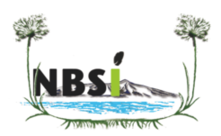Coypu
The South American coypu, Myocastor coypus (Myocastoridae) imported to Kenya in 1950 for fur farming, escaped into the lake around 1965 and gave rise to a large population in the 1970s. They have since largely disappeared through hunting although occasional sightings still occur. Coypu are considered noxious because they feed on aquatic and terrestrial vegetation, including maize, causing significant damage to farmers. Their distribution in the basin includes the rivers, up to the sources; they are frequently seen in stream-side wetlands even above 2500 m a.s.l. Coypu meat is delicious and they are highly valued by local communities in Ecuador, their land of origin. In Naivasha however, coypu is not usually eaten because it is difficult to catch and because people confuse coypu with otters (at least 2 species of African otters are present in the Lake Basin) that are far more aggressive predators. Otters attacks and killing of coypu have been reported by farmers.



